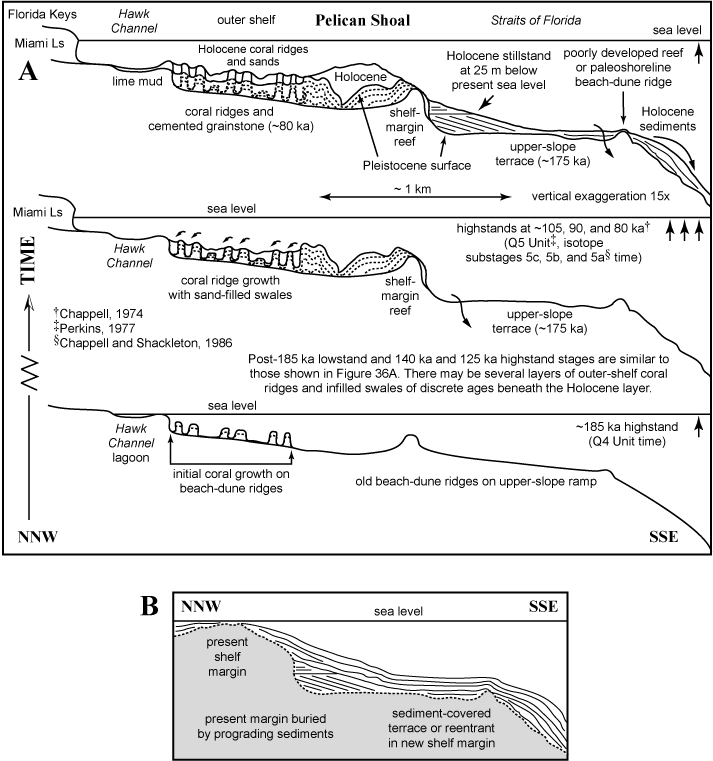FISC - St. Petersburg
Figure 96. (A) Model of evolution at Pelican Shoal shows a Pleistocene backstepped reef complex at the margin and Holocene backfilled progradation of the shelf surface (ages >125 ka modified from Lidz, 2004). Note presence of coral-ridge bands and sediment-filled swales on the outer shelf. Based on seismic and other data, models developed for Carysfort Reef (Fig. 36A), The Elbow (Fig. 40A), Pelican Shoal, and Sand Key Reef (Tile 7/8) all show that these areas of the margin have prograded during the Holocene (the most recent 10 ka). Ls = limestone. ka = thousands of years. Q1-Q5 Units = names assigned by Perkins (1977) to the five marine sections that compose the most recent part of the south Florida Pleistocene rock record. Marine-isotope substages refer to periods of time that correspond to major changes in the paleotemperature record (Fig. 37A, 37B). Long curved arrows indicate offshelf sediment transport. Short curved arrows indicate landward sediment transport and infilling of backreef troughs. (B) With continued sediment accumulation, a future seismic record at Pelican Shoal would show a classic prograded margin with landward-dipping beds behind a buried shelf-edge reef. If sediments were to fill space on the terrace to sea level (e.g., Tucker, 1985), a new shelf margin would be formed above the point at which the present upper-slope gradient slopes below terrace level.
|
Can't see the printable PDF version? Get the free Adobe Acrobat® Reader. |
